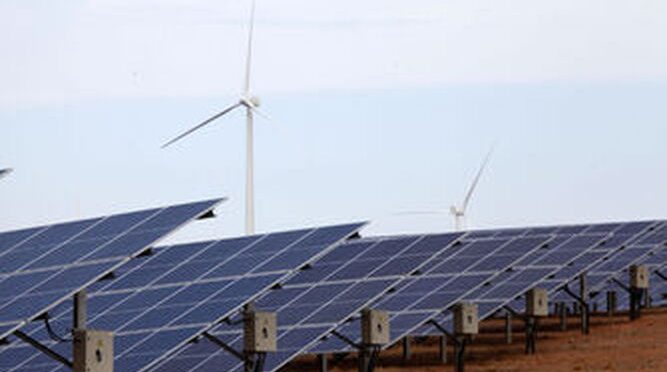Iberdrola will install a new Battery Energy Storage System (SAEB) with a power of 25 MW and a capacity of 50 MWh in the Andévalo photovoltaic plant, the first built with the UNEF Certificate of Excellence.
It is an innovative solution for the storage and integration of renewable energies in the system. The initiative will generate more than one hundred jobs.
Battery storage technology allows to maximize the use of photovoltaic energy, regulating the grid frequency in a millisecond and providing backup capacity during periods of highest consumption.
The Puebla de Guzmán (Huelva) plant will host the construction of this new battery that, together with five other company projects, have been recognized as Strategic Projects for Economic Recovery and Transformation (Perte), in its renewable energy division. , green hydrogen and storage (ERHA) and will have 37.5 million in financing. In addition to Andalusia, the projects will be built in Castilla y León, Extremadura and Castilla La Mancha.
The batteries will have Lithium-Ion technology, the most widespread today given its relationship between performance, technological maturity and cost. These systems will be installed as hybrid technology together with renewable energy sources, in this case solar, so the photovoltaic and the battery will share the same connection point.
In Castilla y León, a battery will be installed in Revilla Vallejera (Burgos), where the company completed its first hybrid wind and solar plant in Spain in 2023. Extremadura, for its part, will have two new batteries, specifically in the province of Cáceres, where the Campo Arañuelo I and II photovoltaic plants are located.
In Castilla-La Mancha, in the municipalities of Valverdejo, Alarcón and Olmedilla de Alarcón (Cuenca), where Iberdrola has solar parks, two batteries will be installed. The sixth battery will be built in Huelva, in the municipality of Puebla de Guzmán, where Iberdrola has the Andévalo photovoltaic plant.
Storage systems are key to addressing the challenge of the energy transition and are destined to become an essential element in the electrical system by allowing the quality of the electrical supply to be improved, ensuring the stability and reliability of the network and integrating and harnessing energy. generated by renewable sources.
Iberdrola has assured that it maintains its commitment to storage through pumped hydroelectric technology, where it is a leader with a power of more than 4,000 MW installed, in projects such as Cortes-La Muela (Valencia) or Tâmega (Portugal), which with An installed capacity of 1,158 MW is the largest installation of its kind in Europe.
In November 2019, Iberdrola inaugurated the first electrical energy storage system with lithium ion batteries for distribution networks in Spain. The project, “pioneer in the country” and located in Caravaca de la Cruz (Murcia), allows improving the quality of the energy supply in the environment, as well as the use of solar energy generated in the area.
The Puertollano battery, with a capacity of 20 MWh, stores the production obtained from a nearby solar plant to generate green hydrogen from the largest plant of this energy source for industrial use in Europe.
The company also has a stand-alone system in Abadiño (Vizcaya), which allows it to connect directly to the network and operate without having to be connected to a facility. In this way, it manages to decongest the network and store excess energy at times of maximum generation so that it can be used when it is most necessary. Specifically, this battery is connected to the evacuation of the Oiz wind farm.
Also in the Basque Country, Iberdrola has the first battery in Spain that stores wind energy in the Elgea-Urkilla wind farm.
Technology for the environment
With hybrid systems, by having two technologies capable of alternating, dependence on changing environmental conditions and limitations due to the possible lack of resources such as wind or sun incidence are significantly reduced.
Hybrid plants use the same connection point to the grid and share infrastructure, such as the substation and the evacuation line for the electricity produced. They are located on land that was already destined for renewable generation and allow for common roads and facilities for the operation of both technologies. All of this “results in a much lower environmental impact than two independent plants would have had.”


